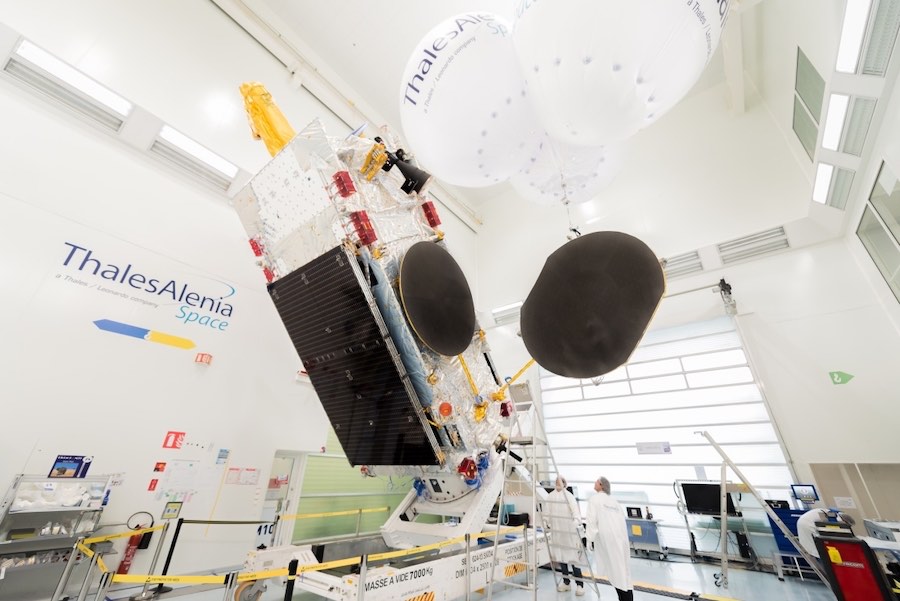
A French-built communications satellite for Russia’s Gazprom Space Systems launched May 30 is maneuvering toward its final operating location in geostationary orbit using a set of backup thrusters after the spacecraft encountered a problem with its main engine.
Ground controllers planned a series of burns using the Yamal 601 satellite’s main engine to send the craft into geostationary orbit more than 22,000 miles (nearly 36,000 kilometers) above the equator, where its speed will match the rate of Earth’s rotation, giving Yamal 601 a constant coverage zone over Russia, the Middle East and parts of Southeast Asia.
But a main engine burn June 1 was cut short when the Yamal 601 satellite’s pointing, or attitude, drifted away from expected parameters, according to Gazprom Space Systems, a subsidiary of the Russian oil giant. The spacecraft went into safe mode, but all other systems on Yamal 601 remained healthy, officials said.
Gazprom Space Systems said the problem was presumably caused by a deviation in the thrust vector from Yamal 601’s primary orbit-raising engine, which was built in Germany by ArianeGroup. Thales Alenia Space of France, the prime contractor for the Yamal 601 spacecraft, determined the satellite’s lower-thrust rocket engines could be used for orbit-raising.
With a fully fueled weight around 11,900 pounds (5,400 kilograms), Yamal 601 satellite successfully launched aboard a Russian Proton rocket May 30 from the Baikonur Cosmodrome in Kazakhstan. The Proton’s Breeze M upper stage delivered the spacecraft into an on-target elliptical orbit, with a high point near geostationary altitude more than 22,000 miles above Earth, and a low point roughly 4,000 miles (6,400 kilometers) in altitude.
It was up to Yamal 601’s own propulsion system to finish the job of reaching geostationary orbit.

The S400 main engine aboard Yamal 601 produces around 90 pounds of thrust, while the satellite’s smaller control jets generate approximately 2 pounds of thrust. By burning the smaller thrusters for longer durations, Yamal 601 can reach its intended orbit by early July, Gazprom said in a statement.
Despite the main engine issue, Yamal 601 is still expected to complete its planned 15-year mission for Gazprom, according to Thales Alenia Space, which assembled the satellite at its facility in Cannes, France.
The first orbit-raising maneuver using the backup mode was completed June 6, Gazprom said.
Yamal 601’s C-band payload, which consists of 18 transponders, will replace coverage previous supplied by the Yamal 202 satellite launched in 2003. The C-band transponders will cover Russia, neighboring countries in Eastern Europe and Central Asia, the Middle East, and part of Southeast Asia.
According to Thales Alenia Space, a Ka-band payload on-board Yamal 601 will expand Gazprom’s coverage, with 32 spot beams over Western Russia and West Siberia to provide high-speed broadband connectivity to companies, regional governments, and individual consumers.
Gazprom Space Systems provides communications capacity for the Russian government, Russian television broadcasters and other commercial customers.
Once in position at an operating location in gestationary orbit at 49 degrees east longitude, Yamal 601 will replace the aging Yamal 202 communications satellite launched in 2003.
Email the author.
Follow Stephen Clark on Twitter: @StephenClark1.



